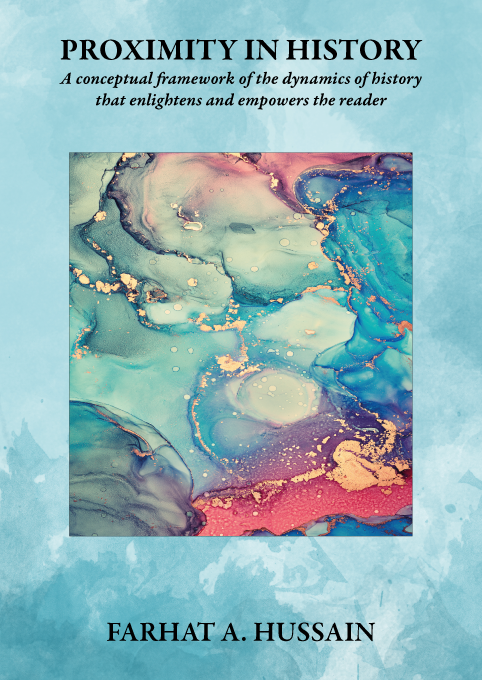
Proximity in History
Author: Farhat A. Hussain
A framework of study of the dynamics of history that enlightens and empowers the reader
Details to follow
‘Exploring proximity in history illuminates the connectivity of the human story across time, space and context, generating valuable perspective of the past and a multitude of possibilities for the future.’
Irrespective of subject matter, the phenomenon of proximity, whether considered carefully, critically and substantively, or not, is present and relevant to the history of any given period, place, person and phenomenon. At universities, lectures and authors often focus on the significance of cause and effect in providing shape and rationale or meaning to a given historical study. Whether a historical study has focused on a nation, person, theme, such as economy, politics or other, period or other phenomenon, the author has felt for many years that much more can be attained from critical engagement in historical studies via examining the subject and phenomenon of proximity much more substantively and explicitly. The usefulness of this endeavour necessitates its careful consideration, and this work is very much written with this in mind as various examples and forms of proximity are articulated, explored and analysed in this pioneering study that contributes a vital framework to the study of the dynamics of history. Amidst the multifarious impact of globalisation, the recent outbreak and spread of the COVID-19 virus and efforts to contain this huge challenge have further underlined the very real significance of proximity in and for people’s lives and is further explored in this work. This work will contribute to the historical and contemporary perspective of proximity as a phenomenon that, due to COVID, people have heightened their awareness of in particular areas and ways. In examining a substantive canvas of time, place and human experience, this book takes the reader on a unique journey of exploration, contemplation and empowerment that enlivens the intellect and enriches knowledge and understanding of this subject matter and the dynamism of history. This effort, in turn, may very well contribute useful insights and perspectives to the present and future in highlighting the role of history as a teacher of experience.
Examples of the formulation of proximity in history by the author:
Nature of proximity
Cause of proximity
Impact of proximity
Intensity of and in proximity
Distance of proximity
Relationship of proximity
Change in proximity
Variation in proximity
Awareness of proximity
Patterns of proximity